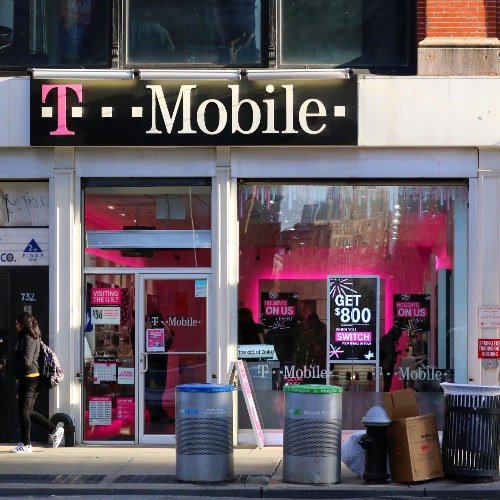What to expect from T-Mobile's FWA in 2023: Slowing growth, rural expansion
As its network reaches capacity, T-Mobile appears to be shifting its fixed wireless target from urban customers to rural customers. But its rate of growth is still expected to slow in 2023.

T-Mobile's fixed wireless Internet business this year appears headed into a new phase that will likely involve an expansion into rural areas of the US. However, it will likely also involve an overall slower rate of growth.
The newest data points supporting this view come from the financial analysts at Evercore. The analysts noted that downloads of T-Mobile's home Internet app slowed 24% month-over-month in January, following the company's aggressive holiday promotion in December.
"We believe this is the beginning of a slowdown in the pace in existing markets," they wrote. However, they noted that T-Mobile is also in the midst of expanding its speedy 2.5 GHz midband 5G network to around 35 million new locations – mostly in rural areas – during 2023. That project, they said, will help prop up T-Mobile's fixed wireless growth curve, albeit with a rural focus.
"Assuming Q1 downloads stabilize at the January run rate, T-Mobile FWA [fixed wireless access] downloads would decline -8% vs. Q4 2022," Evercore analysts wrote of the company's app. The app represents a good marker for T-Mobile's efforts because it is exclusively intended for T-Mobile's FWA customers.
Toyota vs. Ferrari
During T-Mobile's recent quarterly conference call, CEO Mike Sievert likened the company's fixed wireless service to a Toyota competing against the Ferrari-type speeds provided by a fiber Internet connection. "It's kind of like the people at Ferrari pointing a finger at the world's best-selling car, Toyota, saying, 'We're faster. We have the faster car.'"
Continued Sievert: "Yes, but Toyota is the world's best-selling car. ... And if you look in the case of T-Mobile, 5G home broadband is perfectly suited to what people want."
Broadly, T-Mobile has emerged as the leading broadband provider in the country as it captures tens of thousands of new FWA customers every month. "With 2.6 million total customers now, T-Mobile remains on track to hit the target of 7-8 million customers by year end 2025," according to the financial analysts at Raymond James.
However, based on recent data from the financial analysts at Evercore, T-Mobile's 5G network appears to be reaching its capacity limits in the urban areas where it first started offering fixed wireless services. Indeed, the Raymond James analysts noted that T-Mobile's FWA growth "moderated somewhat" in the fourth quarter of 2022 with 524,000 new customers, down from the 560,000 the operator reported in the second quarter of 2022 and the 578,000 it reported in the third quarter of 2022.
According to the analysts at New Street Research, T-Mobile's FWA offering has begun to run up against competition from Verizon's own FWA service as well as Charter Communications' new Spectrum One bundle of mobile and home Internet services. Partly as a result, T-Mobile is shifting more of its FWA efforts toward prepaid customers, business users and subscribers in rural areas – instead of the postpaid customers living in urban areas that it previously courted.
FWA into the future
According to T-Mobile's executives, the company's fixed wireless service is unlike anything else in the market. Customers can easily try out the service – all they need to do is plug in a receiver inside their home – unlike cable and fiber customers who typically need a technician to come into their home to set up services. And though that also makes it easy for customers to cancel services – all they need to do is return the receiver – T-Mobile officials have said they're comfortable with the rate of those returns. But they haven't disclosed what that rate (dubbed churn) has been.
Further, T-Mobile officials argue that the company is working to improve its wireless network to support current and future customers. For example, the company said it plans to add a significant amount of additional midband spectrum into its network this year, from around 150 MHz to around 200 MHz. That's important because network capacity and speeds are directly tied to the amount of spectrum an operator is using.
Finally, company executives have said that T-Mobile may consider new technologies to improve its FWA services. For example, they have suggested the operator could deploy some of its millimeter wave (mmWave) spectrum in order to support faster speeds and more customers. They have also said T-Mobile could install receivers on the outside of customers' homes, thereby boosting signal reception and reach.
Already T-Mobile is deploying Multi-User Multiple Input Multiple Output (MU-MIMO), according to the analysts at Signals Research Group. Such technology can help maintain each customer's overall speeds by eliminating the need to share network resources with other nearby users.
Related posts:
— Mike Dano, Editorial Director, 5G & Mobile Strategies, Light Reading | @mikeddano
About the Author(s)
You May Also Like












